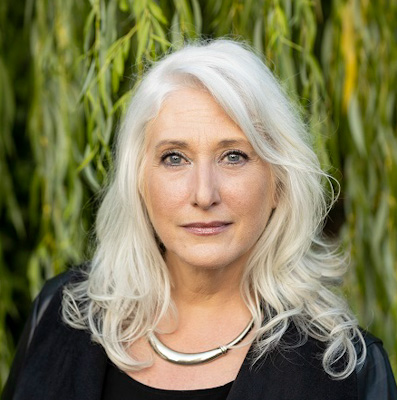Retiring Reluctantly: As lawyers age, many struggle with exit strategies

Law firms across the country have been grappling with what to do with the baby boomers as they reach and surpass the typical retirement age of 65. Image from Shutterstock.
Lawyers hear it all the time: Don’t work yourself to death. They trade stories about attorneys in their 90s collapsing at their desks or on their way to work.
“We know these stories because there’s some truth to them,” says Beth Slate, a Seattle-based law firm organizational development consultant for RJH Consulting. “It happens that attorneys as they age often aren’t willing to let go of work.”
The challenge, Slate says, is convincing them to walk away from their jobs. Another consideration, according to consultants, is that people age differently. Some lawyers may be at full strength in their 70s and 80s, while others fall behind in their abilities to practice law.
For years, law firms across the country have been grappling with what to do with the baby boomers, the generation born between 1946 and 1964, as they reach and surpass the typical retirement age of 65. According to the 2023 ABA Profile of the Legal Profession, nearly 14% of all lawyers are 65 or older. Comparatively, about 7% of all U.S. workers are 65 or older.
The problem, law firm consultants say, is that lawyers often don’t want to leave. So firms often either have retirement policies in place they struggle to enforce, or they lack any sort of plan for older lawyers.
Also, for many senior lawyers, especially partners who have had successful careers and dedicated decades of time and energy to their practices, leaving is hard, says law firm consultant Brian Kennel.
“Being a successful lawyer is part of their being,” adds Kennel, founder and CEO of PerformLaw, a New Orleans-based consultancy firm. “Intellectually, they may know they need to let go, but emotionally, they can’t bring themselves to do it. That’s when the firm must intervene, which is no fun, and force the transition of cases. What was otherwise a great relationship over many years can sour instantly.”
And while some firms, especially BigLaw practices, have mandatory retirement ages, partners don’t necessarily abide by them, Slate says. Meanwhile, smaller firms often fail to have any established written protocol to transition older lawyers out of their partnership or other roles and bring younger lawyers into leadership positions, consultants say.
 “We know these stories because there’s some truth to them,” says Beth Slate, a Seattle-based law firm organizational development consultant for RJH Consulting. “It happens that attorneys as they age often aren’t willing to let go of work.”
“We know these stories because there’s some truth to them,” says Beth Slate, a Seattle-based law firm organizational development consultant for RJH Consulting. “It happens that attorneys as they age often aren’t willing to let go of work.”
“There’s the old saying, ‘The cobbler’s kids have no shoes,’ right?” Slate says. “Lawyers, especially in these small to midsized firms, tell their clients to have their contracts and their wills and estates set up in writing, of course. But these same lawyers often have no plans for their partnership, for how they will leave if they get sick or when it’s time to retire, for anything.”
But partnership agreements can outline what happens in case of a major catastrophe, such as cancer or a heart attack, along with other signs of incapacitation, Slate says. Discussions for drafting the agreements can be challenging.
“People don’t want to talk about their own mortality, so it gets kicked down the road or swept under the rug. But it’s never too early to talk about a succession plan,” says Michael S. Melfi, a partner in the Ann Arbor, Michigan, office of Taylor English Duma, who specializes in advising law firms and other businesses.
If a law firm wants to successfully create succession plans, it needs to create a culture where lawyers are encouraged to think about what’s best for the firm, not just themselves, says Katherine Wilson, co-founder of Fractional Law Firm CMO, an Atlanta-based consultant group.
“When I was in law school, we were taught from a perspective that you could go out any time and hang a shingle and build your own practice. Law schools encouraged this entrepreneurial spirit,” she says. “But the fact is that many lawyers join large organizations in which teamwork is important, which isn’t as emphasized in law school as perhaps it should be.”
EJ Stern, the other co-founder of Fractional Law Firm CMO, suggests that law firms develop cultures that support a “holistic” attitude toward clients, embedding younger lawyers in each client matter at the start, long before retirement approaches.
In addition, compensation plans should provide financial incentives for lawyers who share their clients with younger lawyers, Stern says.
 “Being a successful lawyer is part of their being,” says Brian Kennel, founder and CEO of PerformLaw, a New Orleans-based consultancy firm. “Intellectually, they may know they need to let go, but emotionally, they can’t bring themselves to do it.”
“Being a successful lawyer is part of their being,” says Brian Kennel, founder and CEO of PerformLaw, a New Orleans-based consultancy firm. “Intellectually, they may know they need to let go, but emotionally, they can’t bring themselves to do it.”
“The focus has to be from the moment the new client is brought in,” Stern says. “This means that from the top down, the law firm culture must be a ‘we’ culture so that each lawyer sees that part of their legacy is making sure the client is sustained long after they have left the firm.”
However, sometimes lawyers, particularly senior partners, facing strict mandatory retirement policies simply threaten to take their clients to another firm or open their own practice. Confronted with the possibility of losing clients, law firm management will likely not enforce a mandatory retirement clause, according to Kennel.
But there’s also a chance a firm will force the issue, says Peter Zeughauser, a law firm consultant and the founder of Zeughauser Group.
In the most difficult instances, firm leaders will remind a partner reticent about leaving that the partnership or the firm’s executive committee has the power to expel a partner, says Zeughauser, who is based in Newport Beach, California. Even the most reluctant partners don’t want to suffer the embarrassment of a vote to expel them put to the partnership or the firm’s executive committee, he adds.
More recently, some law firms have developed creative transitioning arrangements for lawyers approaching their mid-60s. In discussions with firm management, senior lawyers create two- or three-year plans for moving their clients to other attorneys in the firm. Under these plans, partners who want to continue to work often can get approval from the firm chair. In some arrangements, older lawyers can stay on at the firm as nonequity or contract attorneys.
“Generally speaking, firms want to make room in the partnership for younger partners and want the older partners to play a proactive role in smoothly transferring each client relationship for which they are responsible,” Zeughauser says. “Done well, a transitioning plan provides comfort for the client in terms of the continuity of the relationship.”
But there can still be issues even with a transitioning plan in place, because firm chairs have to “spend a fair amount of time patiently cajoling an aging partner to get on board with the program, particularly when large client relationships are involved,” Zeughauser explains.
“Some lawyers still resist, no matter what the firm does to try to make it easy,” he adds.



